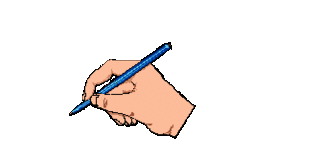Why Komix with an "x"?
When the late Don Ramon Roces' ACE Publications began the Filipino comics industry way back in 1947, "comics" was spelled/translated in the tagalog vernacular as "komiks". Other comics publications that followed during the late 1940s and 1950s adopted the same "komiks" christening.The industry grew with ACE leading the pack. It was a labor intensive operation from the writing, drawing and editing stage down to the printing, distribution, marketing and collection stage.
But as ACE's business grew, its workers' wages did not. Prices of commodities rose without any corresponding increase in wages. In short, ACE, the biggest Filipino comics publisher at the time faced a serious labor problem. Thus in 1962, ACE's workers went on strike paralyzing and closing down the company. This was a bad omen for ACE's top comics writers and artists who were wholly dependent on ACE for their livelihood.
Among those workers were the comics artists and writers who helped create the pinoy "komiks" industry: Foremost of those legends were: Amado Castrillo, Tony Caravana, Nestor and Virgilio Redondo, Alfredo Alcala and Romeo Francisco. As a response to the closure of ACE and presumably to the way business was run in their former company, these pioneers set up their own company : "CRAF" an acronym representing the first letter of each their surnames. They produced their own brand of comics distinctively spelling them as "KOMIX" to differentiate their product from the ACE monopoly that had gone before.
In short,"Komix" was a symbolic cry of rebellion to what had gone before. Filipino comics creators through CRAF were paving the way by independently and valiantly venturing on their own. They were making their own comics their own way. No monopoly. No exploitation. No tradition.
Komix not Komiks.CRAF was the Philippine version of America's "Image Comics" of the 1990s. But unlike Image, CRAF asserted their artistic and economic independence as early as 1963.
Following CRAF's lead, this blog symbolically asserts a break from the tradition of Filipino "komiks", specifically from a business and economic point of view. Its high time the visual medium and business of comics in this country were not taken lightly. Filipino komix can be more than just light entertainment for kids or a marginalized artform appreciated by a few nostalgists and "artists". There is untapped potential here. Let's not screw this one up.
But as ACE's business grew, its workers' wages did not. Prices of commodities rose without any corresponding increase in wages. In short, ACE, the biggest Filipino comics publisher at the time faced a serious labor problem. Thus in 1962, ACE's workers went on strike paralyzing and closing down the company. This was a bad omen for ACE's top comics writers and artists who were wholly dependent on ACE for their livelihood.
Among those workers were the comics artists and writers who helped create the pinoy "komiks" industry: Foremost of those legends were: Amado Castrillo, Tony Caravana, Nestor and Virgilio Redondo, Alfredo Alcala and Romeo Francisco. As a response to the closure of ACE and presumably to the way business was run in their former company, these pioneers set up their own company : "CRAF" an acronym representing the first letter of each their surnames. They produced their own brand of comics distinctively spelling them as "KOMIX" to differentiate their product from the ACE monopoly that had gone before.
In short,"Komix" was a symbolic cry of rebellion to what had gone before. Filipino comics creators through CRAF were paving the way by independently and valiantly venturing on their own. They were making their own comics their own way. No monopoly. No exploitation. No tradition.
Komix not Komiks.CRAF was the Philippine version of America's "Image Comics" of the 1990s. But unlike Image, CRAF asserted their artistic and economic independence as early as 1963.
Following CRAF's lead, this blog symbolically asserts a break from the tradition of Filipino "komiks", specifically from a business and economic point of view. Its high time the visual medium and business of comics in this country were not taken lightly. Filipino komix can be more than just light entertainment for kids or a marginalized artform appreciated by a few nostalgists and "artists". There is untapped potential here. Let's not screw this one up.

0 Comments:
Post a Comment
<< Home